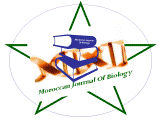 Moroccan Journal Of Biology. ISSN : 1114-8756
Moroccan Journal Of Biology. ISSN : 1114-8756
|
||||
| Home| About | Archives | | Abonnement | | | ||||
|
||||
|
||||
|
|
||||
|
Moroccan Journal Of Biology. ISSN : 1114-8756
The lack of standardization of measurement of vitamin D, and unlike specificities of available techniques, according to the forms of vitamin D, had led to new approaches to establishing reference values for this hormone. It was suggested that the biological activity of a given hormone is dependent more at its free form rather than a bound form to serum proteins, what is known as "Free hormone hypothesis". The importance of the free form of vitamin D is demonstrated when it was observed that the concentration of free 25-hydroxyvitamin D (free 25 (OH)D) was similar among African Americans and whites, despite lower levels of total 25 (OH) D among Blacks. What gave the idea that free 25 (OH) D is a best marker of vitamin D status? This work is to put together the current literature data on free vitamin D, and try to find an answer to the question: Does the free vitamin D is a best marker of vitamin D status? |
||||